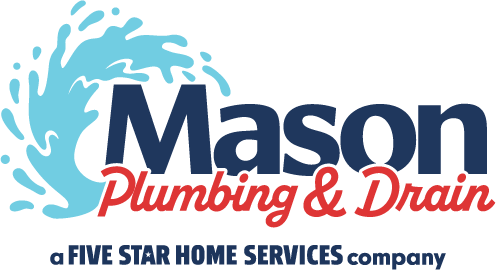Spring is here and for many, that means it’s time for spring cleaning! Whether you’ve planned some deep cleaning or possibly even organizational projects, we hope you get to complete everything you set out to do. As your faithful local plumbing experts, we are here to remind you not to forget about your plumbing system in the hustle and bustle of it all! After all your plumbing system has faced the long winter season, so a bit of thorough cleaning and attention to details will make all the difference in terms of preventative maintenance.
Leavingo ut certain parts of your plumbing system could unfortunately lead to expensive repairs in the future if left neglected. Today, Mason Plumbing & Drain aims to equip you with some of our practical spring preparation tips. That way, your plumbing system is able to withstand whatever the rainy spring season throws your way.
1. Check Your Water Heater
Your water heater is a reliable ally, ensuring you have warm water whenever you need it. As spring approaches, it may be tempting to overlook your water heater with the weather being warmer, but now is actually an ideal time to assess it for any maintenance needs.
- Temperature Check: Your water heater is likely already set on the temperature that best works for your home. But while we are here, it doesn’t hurt to check anyway. It is recommended to be set to 120 degrees Fahrenheit or slightly lower as per the CPSC – The Consumer Product Safety Commission.
- Visual Check: Go ahead and inspect your water heater, including the valves and connections, for any signs of corrosion. If you observe rust, corrosion, or any unusual appearance, please contact a professional promptly to evaluate the extent of the damage. While it may turn out to be nothing, addressing any unnoticed issues from the past months now can prevent them from developing into more significant and costly problems later on.
- Audible Check: Unusual noises also serve as an early warning sign, suggesting potential strain on the system. So, if you detect any strange sounds, especially sizzling, hissing, or crackling, it could indicate the need to drain your water heater. Contact a professional promptly to address this issue.
- Cleaning Check: You may find the area around the water heater full of dust and dirt. If this is the case with yours, take a moment to gently sweep around the unit. You can use a vacuum with a nozzle attachment if needed. Just be sure to practice caution and move slowly. If the unit itself is layered with dust, carefully wipe down the water heater with a damp cloth, then wipe it dry afterward.
Note that a water heater typically has a lifespan of about 8-12 years, depending on its maintenance. If yours is nearing this timeframe, it may be a good idea to start thinking about getting a replacement.
Fun Fact: Did you know the first day of spring in 2024 is on March 19th?
2. Check Your Sump Pump
For households equipped with a sump pump, it’s important to note that the early spring season brings high water tables. This period marks the onset of the rainy season, making it crucial to ensure that your sump pump is well-maintained and prepared to manage increased water levels.
- Try the Power: To ensure your sump pump is operational and prepared to act, test it by pouring a bucket of water into the sump pit to confirm its response. If the sump pump does not turn on or respond as it should, you can try troubleshooting it yourself. Click here for instructions on how to troubleshoot your sump pump, or feel free to give us a call to schedule an appointment!
- Check the Pit: Be sure to remove any debris or sediment accumulated in the pit. Verify there are no loose particles that could hinder the pump’s efficiency. If discovered, gently remove them. Then, confirm the sump pump lid is securely positioned over the pit to prevent debris from falling in. Also, keep the sump pump area clean and clutter-free to avoid potential plumbing issues in the future.

3. Check Your Indoor Drains
During the rainy spring season, your interior drains face a real challenge. Debris buildup can obstruct proper drainage, causing standing water and potential overflow. To prevent this, ensure all your indoor drains are clean, clear, and ready for spring.
- Kitchen Sink: If you have a garbage disposal, it’s a good idea to run it and make sure it’s working as it should, with the water draining properly. Your kitchen disposal is used often, so giving it some care from time to time is a smart move. You can keep your kitchen sink drain clean using natural products like baking soda and vinegar. For a fresh scent, you can also use lemon juice! Avoid harsh chemical drain cleaners, as they can harm your drains and pipes.
- Bathroom Sink, Tub, Shower & Toilet: To ensure optimal performance, it is recommended to regularly check your bathroom drains for any blockages. Begin by gently removing drain stoppers and screens from sinks, tubs, and showers. Clear any buildup of hair or debris. Once potential blockages are cleared, test the drains by running water to confirm smooth flow. Last of all, you should check that all your toilets flush properly, do not run constantly, and do not back up.
- Floor Drains: To keep your floor drains clean, sweep around them, cleaning up stray hair, dust, and loose particles. In addition, pouring hot water down the drains helps prepare them for use. If extra cleaning is needed, vinegar and baking soda are suitable options for your other drains, as well. Just remember to rinse everything thoroughly with water afterward so no residue is left behind.
3. Check Your Gutters, Downspouts & Outdoor Drains
Your gutters and downspouts channel water away from your residence, which is paramount. So, this task also needs to be incorporated into your spring-cleaning regimen! Otherwise, it may lead to water accumulation near your foundation, potentially causing issues.
*When it comes to ensuring safety, prioritize it above all else. If you’re not comfortable with ladder work or lack the proper tools to complete the job, consider reaching out to a professional for assistance.
- Check the Gutters: Prepare your ladder, gloves, and cleaning tools to maintain your gutters. While they might not need cleaning just yet, it’s wise to inspect them before the April showers pour down! If you do discover leaves or other loose debris that needs to be cleared away, please do so carefully.
- Check the Downspouts: Downspouts are a crucial part of your gutter system and shouldn’t be overlooked during your gutter check. Even if your gutters are clear, blocked downspouts can hinder proper drainage. So, take a moment to check if the bottom piece is clear by carefully removing it and removing any debris. Don’t forget to put it back in place. Consider using a downspout extension to redirect water further away if necessary.
- Check the Outdoor Drains: It is common for loose leaves, flower petals, sticks, and mud to collect over drains. It would be wise to conduct a brief inspection of all outdoor drains in your yard and around your house to ensure they are not blocked. If you discover any obstructions, carefully remove them using a rake or outdoor broom.
By ensuring your gutters, downspouts, and outdoor drains are clear, you are safeguarding your plumbing and home from erosion and flooding. It’s a win-win situation all around!
By incorporating these four plumbing checks into your seasonal home maintenance routine, you not only prevent potential disasters but also extend the life of your plumbing system. Remember, certain tasks may require professional assistance, so it’s advisable to contact a qualified plumber like Mason Plumbing & Drain for tasks beyond your comfort level.
Call Mason Plumbing & Drain today at (513) 298-6996, or schedule an appointment online now by clicking here!

